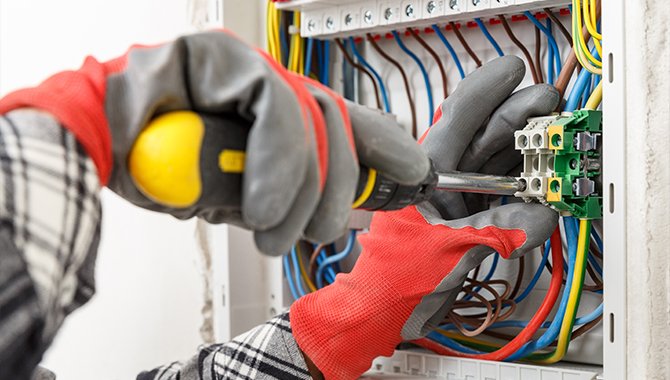
Rubber-insulated gloves are the preferred choice, which are commonly used to protect workers from electric shock and other electrical hazards. These gloves are typically made of natural rubber or synthetic rubber (such as nitrile rubber) and have good insulation performance and abrasion resistance. Because their design is usually intended to prevent electrical hazards, you should always equip yourself with the correct rubber-insulated gloves.
The risk of electric shock increases significantly whenever contact with currents exceeding 500 volts occurs, causing serious damage to the human body and organs. This high-voltage current may not only cause direct electric shock but also lead to arc flashes and sparks, resulting in severe burns or even life-threatening situations. Therefore, understanding the adverse effects of electrical contact is crucial before engaging in any electrical work.
How to maintain protection?
Whether you work on construction sites, in utility departments, or carry out electrified operations in home renovation projects, there are various glove systems and combinations available for your consideration. When facing cuts, punctures, abrasions, and other external injuries, we generally recommend wearing leather protective gloves rather than rubber-insulated gloves.
Are there any other risks to consider?
Ensuring that workers wear gloves with both arc flash protection and flame resistance is crucial when facing different electrical hazards.
For example, with further developments in the automotive industry, especially the rise of the electric vehicle market, the increase in electrical components poses more safety challenges for manufacturing workers. To address these challenges, appropriate measures must be taken to protect workers from electric shock, arc flashes, and other heat-related injuries. Choosing the right electrical safety gloves is essential.
According to the provided information, these gloves must undergo rigorous testing, comply with NFPA 70E arc flash requirements, have higher heat resistance, and effectively prevent dangers such as electric shock and burns, providing better protection for workers, enabling them to handle items more safely, and improving overall safety and efficiency in automotive manufacturing.
How to choose the right glove solution?
Choosing the right type of gloves may seem daunting at first, but in reality, their functionality is much greater than imagined.
Next, you must affirm and determine the maximum voltage that may be encountered and then select gloves that meet or exceed this maximum contact voltage.
Low Voltage:
Class 00: Maximum voltage of 500V AC and 750V DC.
Class 0: Maximum voltage of 1,000V AC and 1,500V DC.
These gloves come in customizable colors, which can be chosen according to personal preferences and needs. Additionally, you can select different lengths to meet specific work requirements.
High Voltage:
Class 1: Maximum voltage of 7,500V AC and 11,250V DC.
Class 2: Maximum voltage of 17,000V AC and 25,500V DC.
Class 3: Maximum voltage of 26,500V AC and 39,750V DC.
Class 4: Maximum voltage of 36,000V AC and 54,000V DC.
Colors can be customized for these gloves as well, and you can choose the class and length according to your preferences.
How to determine which one is best?
Electrical insulation gloves are made of natural rubber latex and use proprietary environmentally friendly impregnation processes, providing excellent flexibility and grip strength.
They need to pass CE certification and EN6093 in Europe, ASTM D120 in the United States, and ISO standards of the International Organization for Standardization to ensure that workers use the safest gloves in highly challenging environments.
What are the periodic inspection standards for electrical rubber-insulated gloves during electrical retesting?
Usually, according to relevant standards and regulations, including EN60903, ASTM D120, etc. For example, ASTM D120 stipulates that gloves have a shelf life of one year from the date of issuance, and gloves not issued but over 12 months from the test date must be retested. Visual and electrical tests must be performed on gloves six months after the original issuance date by ASTM F496.
What should be done annually?
It is essential to carefully check whether the gloves have obvious cracks, aging, and other external changes, and corresponding tests must be performed to detect internal damage. All gloves must be used within the recommended test period.
What should be done after each use?
To ensure that the gloves are not damaged, they must be stored properly. The gloves should be thoroughly cleaned and dried at temperatures below 120°F, then placed in a cool, dry place to avoid excessive exposure to sunlight or damage from ozone sources.
During storage, gloves should not be folded, wrinkled, flipped, compressed, or stretched in any way.
How is correct warehouse storage defined?
All gloves must be stored in their original packaging, and the storage temperature must not be lower than 95°F.
If you want to learn more about electrical gloves, then we at Aibon would be your best choice.
How to Measure Glove Sizes – Source: AIBON
Latex gloves– Source: AIBON
Safety gloves– Source: AIBON
Working gloves– Source: AIBON

